(RE)POTTING: Everything you need to know about repotting & potting soil
- Posted on
- By Leau
- Posted in #howtorepot, #plantcaretips, #repottingseason

Now that it's almost summer, it's high time (and high season arrived a while ago, so hurry hurry!) to repot your plants. Often all the nutrients are already gone from your potting soil, so just for a refresher, it's a good idea to plant your plants in a bigger pot. But also because your roots must have grown a lot and it's starting to get a little cramped in the pot.
There is a lot of information out there concerning potting soil and sometimes too much is just trop. What additives do you need for the perfect potting soil mix? Is regular, universal soil not enough? In what kind of pot should you actually put your plant? No doubt you're stuck with some questions - well, no need to fear! GRUUN is here.
We gathered our best tips & tricks for you regarding repotting, and we also go over the different types of soil and other additives that help your potting soil mimic the natural habitat of your houseplant. In no time, you'll have the biggest, healthiest and happiest plants! :-)
1. Repotting: when is it actually necessary?
It may surprise you, but there is a season when repotting is recommended (as well as seasons when it is not recommended). Repotting is best done in spring or summer because your plants grow extra fast during this period. They get the most energy from sunlight, but also use the most energy during these seasons. So a good, fresh start after their "hibernation" in the form of fresh potting soil and a larger pot is always a good idea. You can repot your plants in other seasons as well, but in spring and summer you can be sure that your houseplants will successfully face and endure the changes. ;-)
"Yes but, when does that actually have to be done, every year?", we hear you thinking. Do you notice that your potting soil feels very dry and airy? That your plant might easily fall out of the pot because the weight is so unevenly distributed? Or that the water runs through your potting soil very quickly, or rather runs away along the edges because the soil is very compact, almost like a lump? Then the nutrients have probably all been used up and it really is time to repot. Also, if you notice that the roots are growing out of your pot (through the holes of your plastic pot, for example), the time has come to give them a little more space.
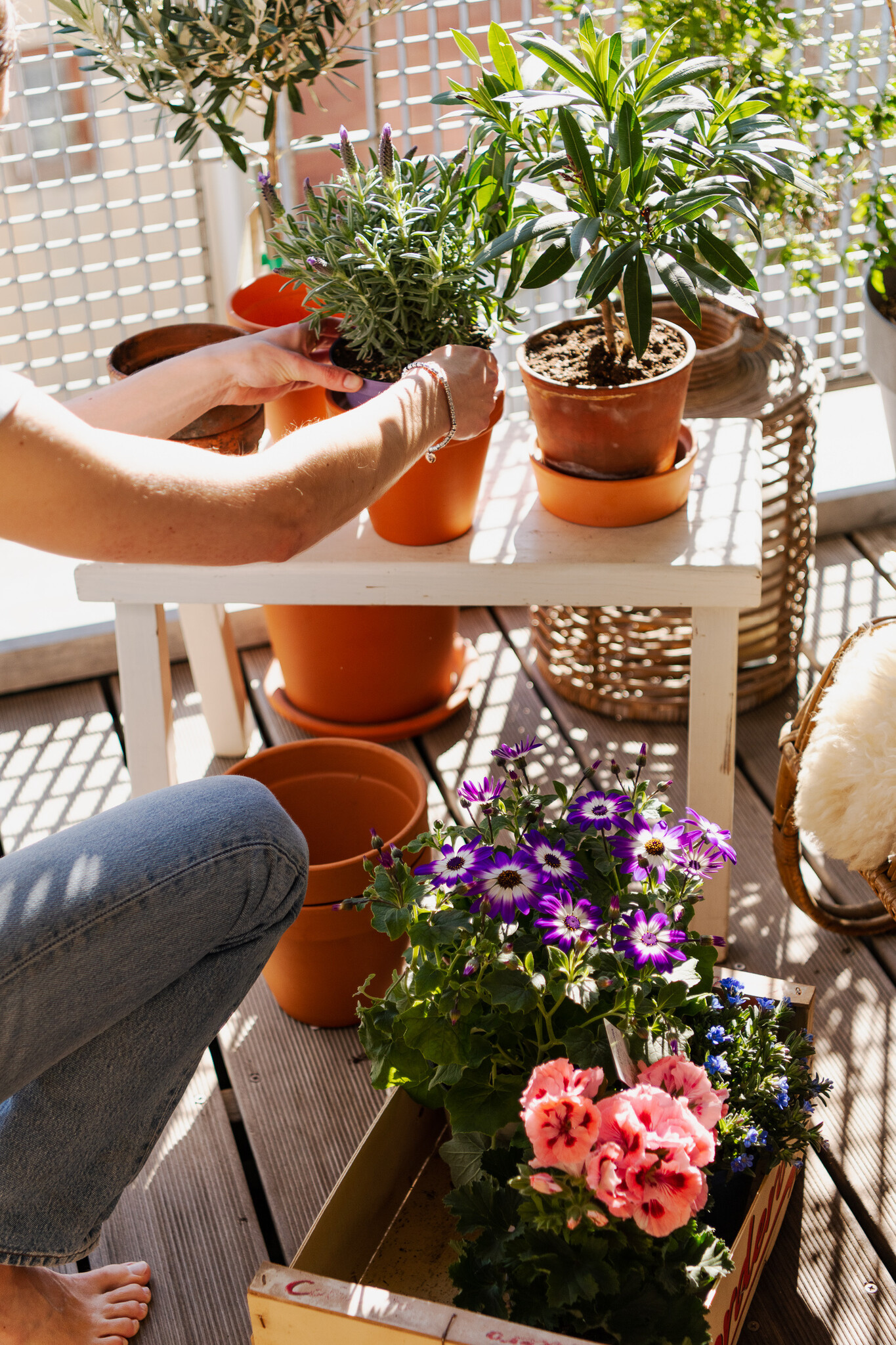
It is recommended to go 10 to 20% larger in diameter than the current pot you have. Often that translates into 1 to 2 centimetres. Is your plant continuing to grow well, or have you really not repotted it in a while? A very harsh "foe" is in order for the latter! Feel free to go a little bigger, but keep in mind that repotting your plant too big also poses a danger: if the water all sinks to the bottom and the roots are not long enough, you will unconsciously dry out your plant. The reverse is also possible: if they stand too long in wet soil, you just cause root rot.
"And for each plant, is a wider pot just enough?" Oy, no... Do you have an Epipremnum, or any other climbing plant, that you grow on a (moss)pole? Those prefer a deep, narrow pot to a wider one. There are some other plants that require a special pot, but you'll see that as soon as you repot your plant: always inspect the roots carefully and try to remove (very gently!!! So you don’t damage the roots) as much old potting soil as you possibly can. And good news: most of them will be really happy with just a wider pot. ;-)
Would you like to see a video of our own repotting practices? Take a look on our Instagram, where we made (this Reel) and (this one).
2. Directly repotting in a pot, without a plastic pot with drainage holes. Is that possible?
Anything is possible, and until recently we just had a coffee pot in GRUUN, too. But seriously, YES. But you do have to take certain things into account.
Chances are, at the bottom of your pot, a reserve of water will build up and affect your roots. You can't see that, ha no, because your pot is closed! So this can create a dangerous situation where your plant will be gone in no time... “Why, plants like to drink water, right?” Yes, but not too much... Stagnant water in your pot means less oxygen and rotting roots. Drowning your plant is a real thing! If you know how much water your plant needs and don't overwater it, the chances of drowning it in a closed pot are slim. Still having doubts if you can handle this? You can also use a moisture meter just to be sure, in order to regularly check the moisture level of your potting soil. We have this handy one in stock, or this wooden version.
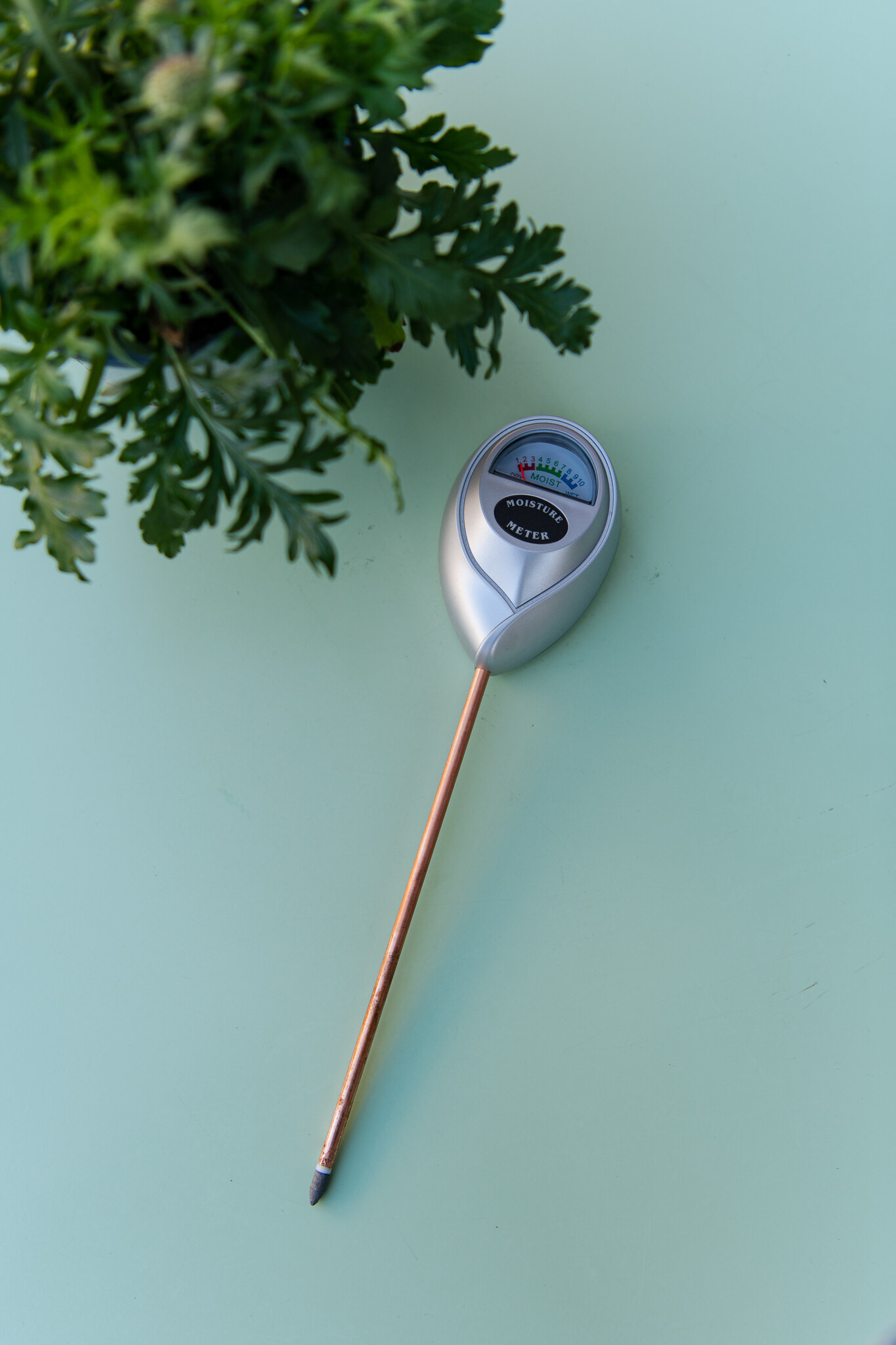
Want to make it really easy on yourself and just take no (or at least very few) risks? A golden tip from GRUUN to you: use clay pebbles. This will minimize the chance of having a reserve of water at the bottom of your pot. But unfortunately, if you keep watering too much those are eventually going to end up in water too and you'll still have the same problem. So taking a long shower with plants that are in a closed pot is never a good idea.
3. So what exactly are these clay pebbles?
You may have spotted these little small balls in old offices on top of the potting soil with houseplants and they’ve surely given you instant vintage vibes. This is done to keep moisture levels high inside the potting soil. With a layer of these granules on top, water evaporates less quickly. But that still doesn't tell you what exactly it is, these expanded clay pebbles, and most importantly, what do you actually do with them?
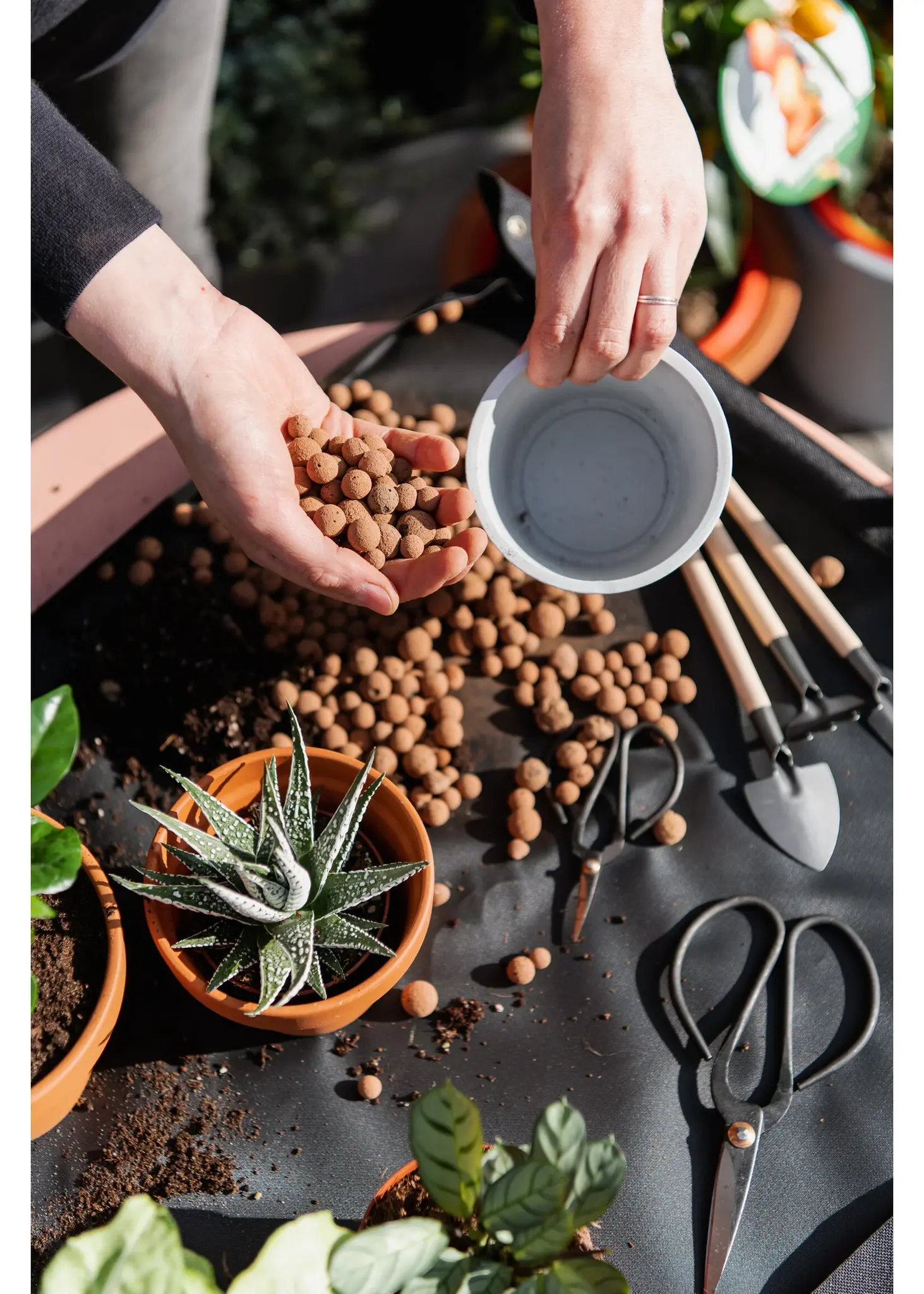
They are balls of clay baked at a very high temperature, making them very airy (and even hollow inside!), but they can also hold a lot of water due to their porous qualities. So ideal for keeping your potting soil airy and not drowning your plants. Use the clay pebbles to fill the bottom layer of your pot (and not the top, for the opposite effect).
Are you using pebbles in a pot with drainage holes? Then they allow more air to reach the roots - which all roots & plants love, so that's always a good idea! Since they also retain moisture, they can easily provide extra water to the plant if it should be too dry. Great, right?! So it prevents you from watering too much and also prevents you from watering too little. Wow! But (oh no, another "but") clay pebbles also take up space that can't be filled by nutrient-rich potting soil.. .a decision you have to make for your plant.
You can also mix clay pebbles into your potting soil, to hold moisture in your soil more evenly. You can also use vermiculite for this, as well as bark and coconut fiber. If you want to make your potting soil more aerated, you can use perlite or pumice. “But what do all those names mean??” Patience patience, we'll talk about that in a minute. Read on if you want to know more about this!
Did you know: clay pebbles are also super eco! Because you can use them forever. You only need to rinse them when repotting to reuse them. Be careful though: if they have been wet for a long time, clay pebbles can contain bacteria. It is best to rinse them, then boil them and rinse them again. That way you make sure you don’t accidentally make your next plant sick by repotting and reusing used clay pebbles.
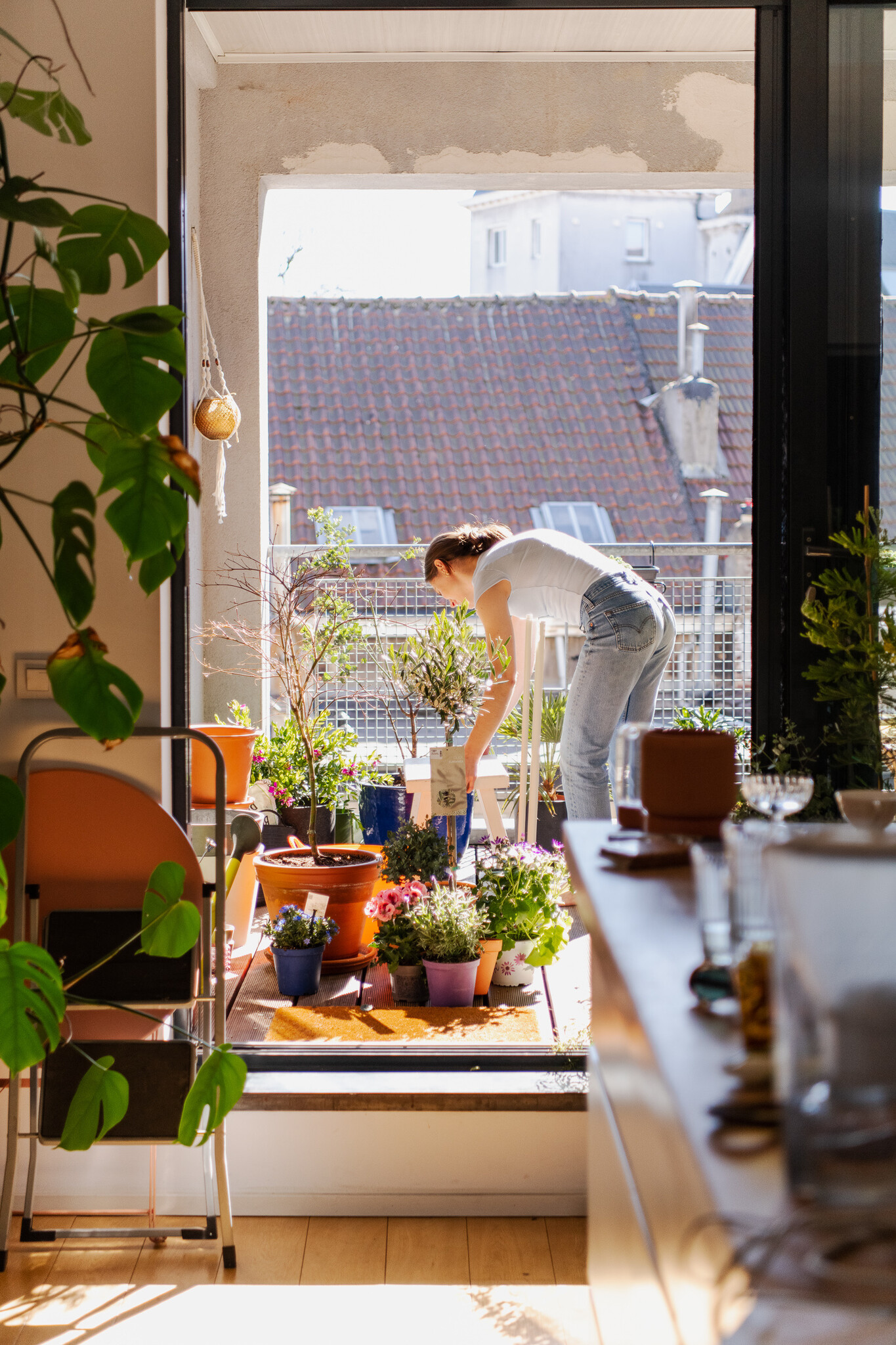
4. Universal potting soil: is it actually a good idea?
Yes, of course it is! You can't do wrong with potting soil for your plants. This is your foundation and thus a very important part of your whole repotting process. Just make sure you have a good potting soil - one without peat or too many chemical additives (unfortunately you don't always see this mentioned on the packaging). Universal potting soil can be used - as the name suggests - for all your plants. But you will also find that your plants will do much better if you start making your own soil mix.
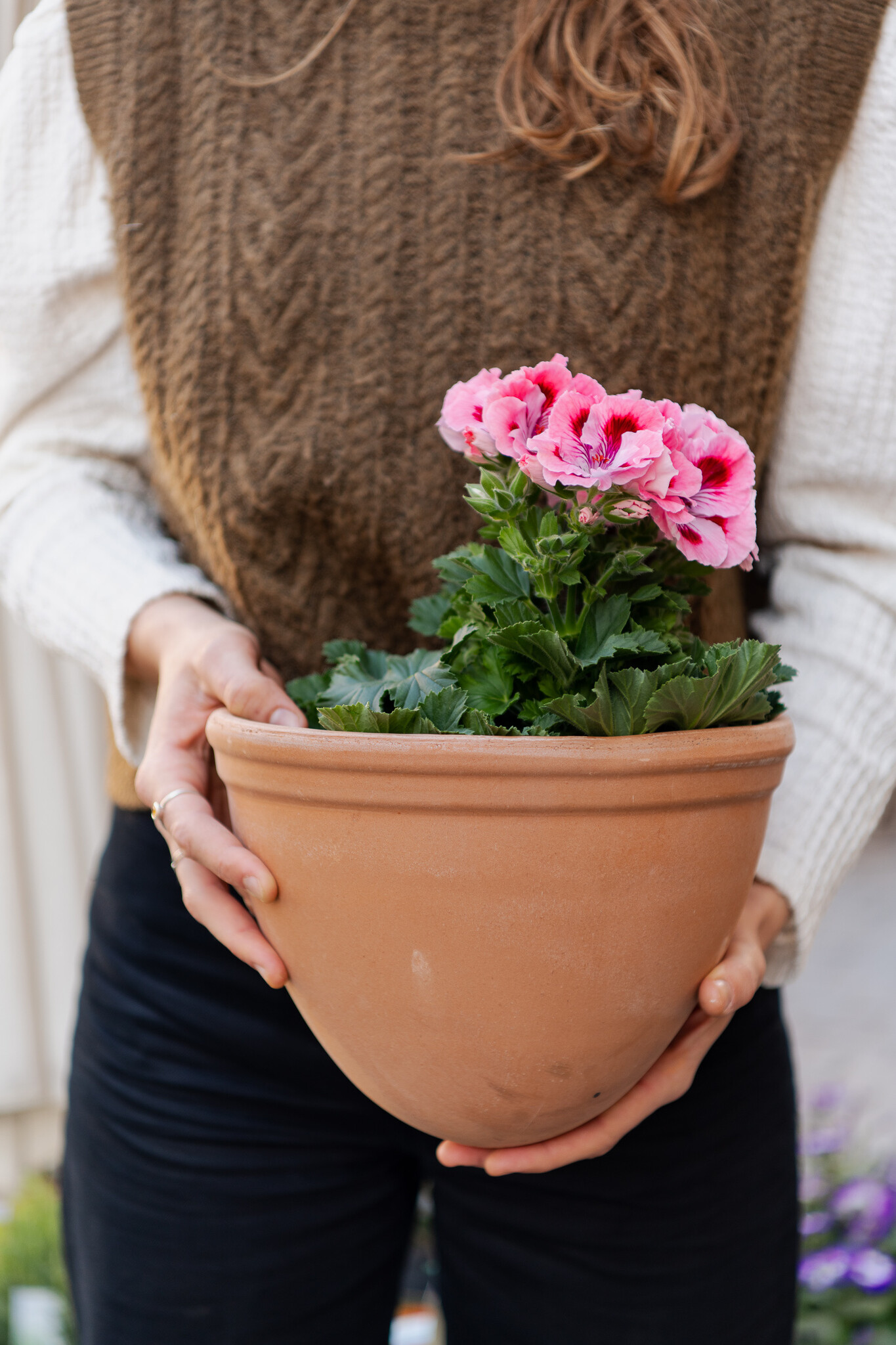
"And are there different types of potting soil?" Yes, there are, and there are - as with all mass production - some drawbacks involved. So choose the best potting soil for your plants, but also consider the planet and the conditions in which potting soil is made. At GRUUN, we have a healthy, nutrient-rich organic potting soil in store that can serve perfectly as a base for your soil mixtures. This one is coconut-based and therefore doesn’t contain any peat moss. The harvesting of the latter emits a lot of CO2, while the coconut used in our potting soil is a residual product from the food industry. Nice and eco! Also an extra fact: by using peat moss, after a while your potting soil becomes a hard (almost hydrophobic) lump, causing your soil to dry out too fast and your plant to die. Did you know that some potting soil even uses manure based on blood or bones from the slaughterhouse? Yes, now we're really going on the sinister tour... Don't worry: ours contains only organic fertilizer. So you don't have to worry about any animals that have suffered for your potting soil. ;-)
So what to use for the best mix of potting soil? You've probably already seen it on our webshop: there are a lot of options. We like to help you by explaining all additives you can use and the best mixtures you can make for your plants.
5. Additives to your potting soil: what exists and what do you need?
There are many possible additives to your potting soil, and sometimes we too can't see the wood for the trees. Fortunately, it is not that complicated. Your plants can go on perfectly well for a while on potting soil alone, but would you like to see them grow as well and beautifully as possible? Then it's really best to opt for additives and good potting soil mixes. Try to mimic your plant's natural habitat as much as possible. We like to list all kinds of different additives for you below.
a) PERLITE
You've probably already seen perlite in your (good) potting soil. The small, white stones are added to your potting soil to provide extra airiness. Since perlite is lighter than potting soil, it sometimes just pops up after watering your plants for a while.
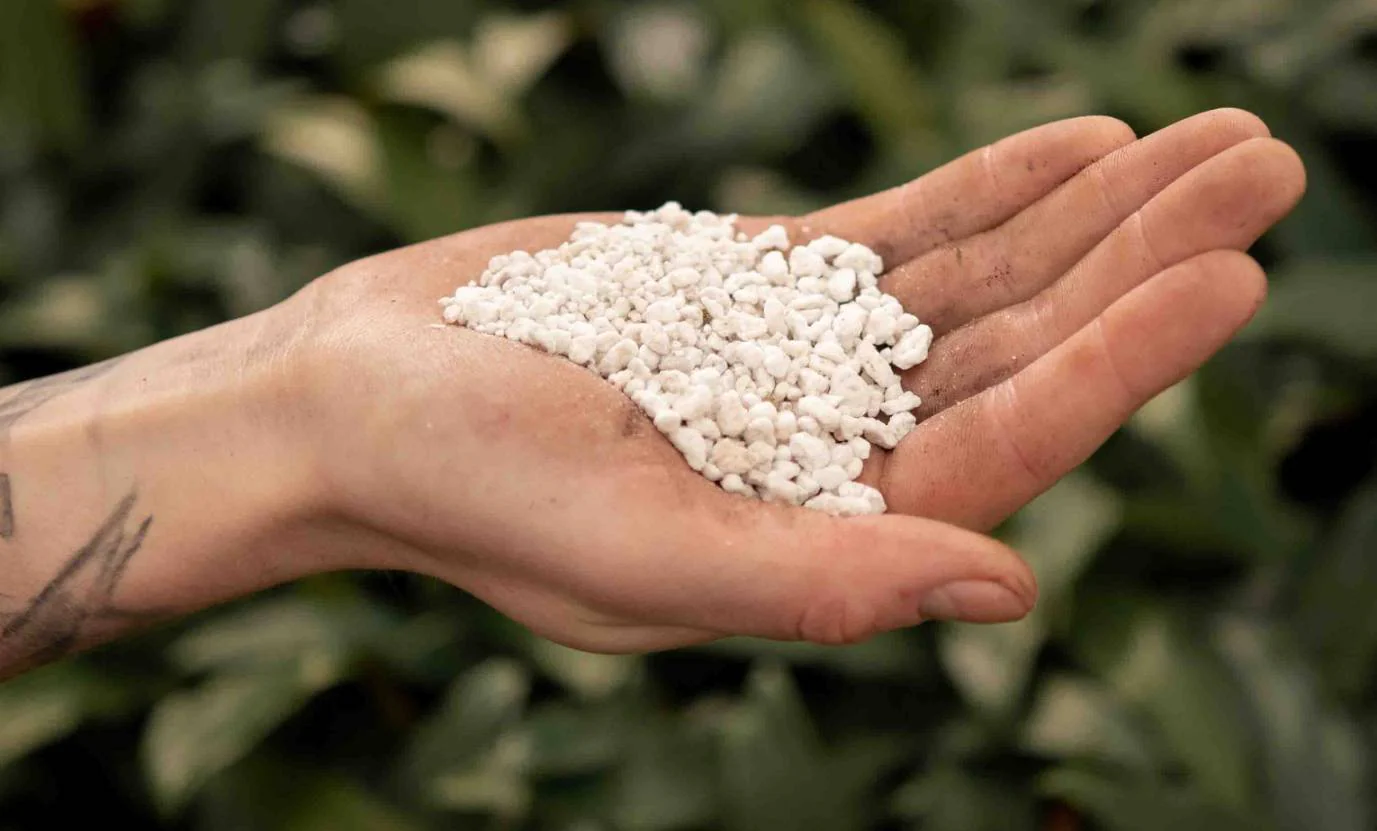
Why do you need perlite in your potting soil? As we mentioned, it is used to make your potting soil more airy. So it's ideal for plants that don't like being in a too compact potting soil (and that's pretty much all plants).
So do you need perlite for all your plants? Yes, actually you do! For both the airiness and humidity of your potting soil, perlite is the ideal addition to any potting soil mix. You give the plants of your roots more space, more oxygen and less chance of rot, since moisture is not retained for too long and the airiness also allows water to run through the potting soil faster.
b) (ORCHID) BARK
Are you looking for something to make your potting soil airier, but which does retain moisture? Then go for pieces of bark. These are your orchid favorites, but also for Monsteras, Philodendrons and other (Araceae) plants that normally grow on another plant (but do not parasitize - Epiphytes do not take nutrients from the other plants or trees they grow on), this is the ideal soil. Your soil will be airier and you will prevent root rot. Since these plants do like to be in moist potting soil and like to retain some water, bark is the perfect addition to your potting soil mix for all your slightly thirstier plants.

c) VERMICULITE
Vermiculite will also make those thirsty plants very happy. This goodie also retains moisture and again provides airiness to your potting soil. It is slightly more compact than orchid bark and therefore easier to add to your universal potting soil. Ferns and Calatheas are also incredibly happy with this. Do you have a number of these specimens in your plant collection? Then vermiculite cannot be missing from your potting soil collection.

d) SAND & PUMICE
Would you like water to run quickly through your potting soil and retain as little moisture as possible? This is definitely necessary for your cacti and succulents. For this you can use sand (not salt sand!) and small pebbles. In our shop you will find pumice stone: this not only makes your pot heavier (very handy when your plant actually gets too heavy on top) but also ensures that water runs through quickly and your potting soil never stays moist (for too long). So ideal for plants that grow in a rather dry environment in their natural habitat.

e) ACTIVATED CARBON
Our favorite ingredient for an extra healthy potting soil? Check out this activated carbon. Activated carbon is an extra addition to your potting soil that keeps the soil healthy, prevents mould and root rot, and cleans any heavy metals or other toxins from your potting soil. Guess how happy this will make your plant?! Almost as excited as we are.
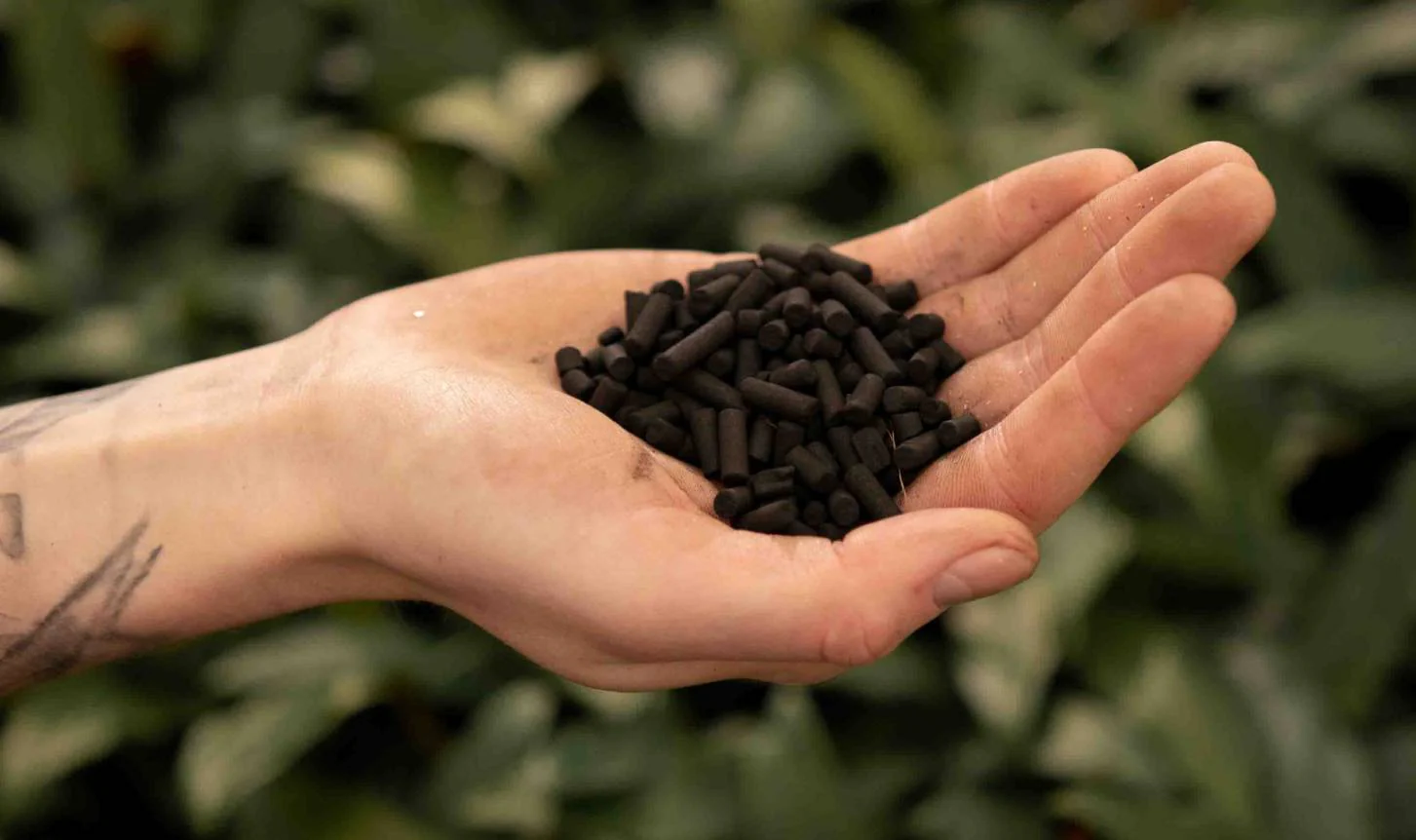
Are you still able to follow all of this information? There are indeed a lot of additives that mean the same thing for your potting soil, but yet each has a different effect. When in doubt, here is the best advice: Just mix everything in your potting soil! Or buy a mix that has already been made. In store we have both a cacti & succulent mix and an Aroid mix (the latter is ideal for your Monstera or Philodendron, for example). Discover all of our potting soil here.
6. Prefer to mix it up yourself?
That’s great! You'll soon find that plants you repot in a custom-made potting soil mix will thank you very much and grow faster, bigger and prettier. Not quite sure how to do this? Always keep your plant's water needs in mind. Does the plant like moist soil? A lot of water? Or just very little? With the information you gathered above, you are already very close to making the perfect soil mix.
Are you still hesitating a bit, or are you just looking for more specific recipes for the perfect potting soil mix? Then you can always search on YouTube for "plantfluencers" and their best tips & tricks. You can go very far in your potting soil mixes, you'll find out when you dive into YouTube channels, but you don't necessarily have to go that far to make your plants happy.
Below we list our best mixes for the most common houseplants, and hope to get you started.
Cactus / succulent
1 part potting soil
1 part sand (no salt sand!)
½ part pumice and/or perlite
Aroids (like Monstera's or Philodendrons)
1 part potting soil (you can also use coconut fiber for this, which is extra light)
½ part perlite
½ part bark
Epiphytic succulents (huh, what? Think Rhipsalis, Lepismium or Epiphyllum - these are succulents that do not grow in dry but tropical environments by nature)
1 part potting soil
1 part bark
1 part perlite
½ part sand (no salt sand!)
Ferns, Calatheas, ...
1 part potting soil
¼ part vermiculite
Strelitzia
1 part potting soil
¼ part bark
¼ part perlite
¼ part (or less) sand
Ficus
1 part potting soil
¼ part bark
¼ perlite
¼ sand
Want your plant to dry out faster? Then you can also mix the part of perlite with some pumice. Feel free to add some "activated carbon" anywhere, think 1/10.
You also have lava stones, ideal for succulents & cacti, as well as worm castings. Those last ones you'll find in all pre-made mixes we sell in store - it's great extra nutrition for your plants! :-)
Now, that was A LOT of information! But by now, you're a true expert in potting soil. Do you have any more questions? Feel free to drop by in our store and we'll happily show you around in the wonderful world of plants, pots & potting soil!
